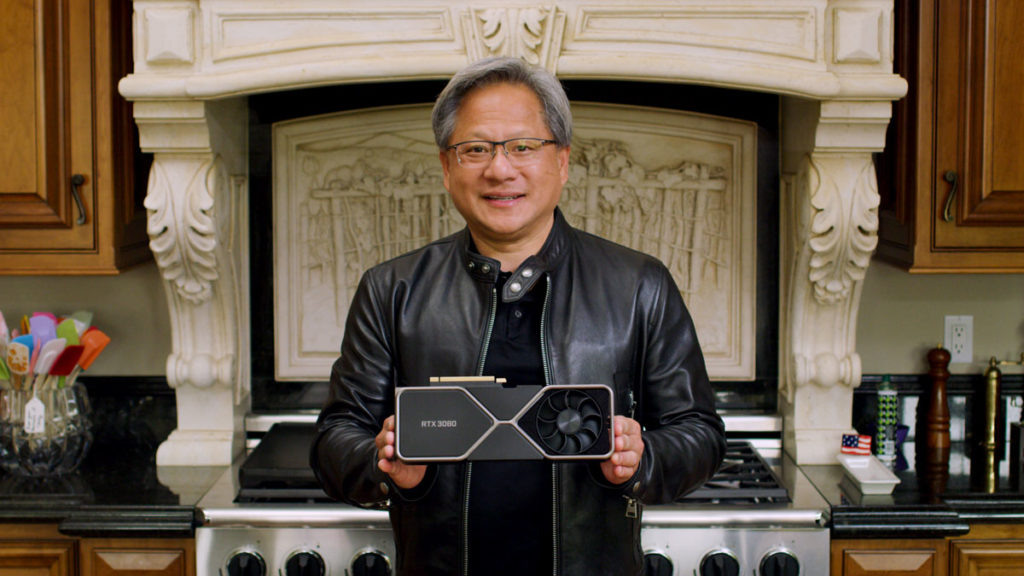
AMD recently revealed its Instinct MI200 Series Accelerators, HPC GPUs that are generating a lot of buzz for being the world’s first multi-die GPUs capable of what is said to be a 4.9x improvement in performance versus competing products. Despite its promise of up to 47.9 TFLOPS of FP64 performance and 3.2 TB/s of memory bandwidth, NVIDIA CEO Jensen Huang doesn’t seem phased by red team’s achievement, however. Asked about the development by TheNextPlatform’s Tim Morgan in a recent interview, Huang shrugged his shoulders and suggested that the new Instinct was just another supposed “NVIDIA killer” that would fail to live up to that claim.
From a portion of Morgan’s interview with Huang regarding NVIDIA’s competition, software, and the Omniverse:
Timothy Prickett Morgan: And now there is a two-year cadence in place for GPUs, DPUs, and soon CPUs as well that enterprises can count on.
Obviously, AMD is much more competitive with its “Aldebaran” Instinct MI200 series GPU accelerators than it has ever been. It is really two GPUs, not one, and I reminded everyone that AMD had “pulled a K80” by putting two GPUs on one device, but nonetheless, this GPU has won two exascale-class systems and many more smaller systems.
I realize that there will not be new GPU announcements from Nvidia until next year, based on the cadence, but what is your response to this competition from AMD, and soon, to a lesser extent, from Intel in the GPU compute arena?
Jensen Huang: First of all, we have competition all the time. So it is not true that this is the first so-called Nvidia killer that has come out. Every year there’s an Nvidia killer and people call it that.
The NVIDIA CEO goes on to suggest that competing in this segment isn’t as complicated as one might think. Huang seems to claim that it’s really just as simple as boosting performance and capacity while keeping pricing competitive.
“[…] I think this is the absolutely easiest space, and let me tell you why,” Huang said. “The reason for that is because an HPL machine needs two things – just two things. HPC centers order everything years in advance, so they have no idea what performance will be for any given device, but here’s the equation for you.”
“The number of peak FP64 flops and memory capacity, put those two things put into one bucket. And in the other bucket, put in dollars. That’s it. That’s the equation.”
That said, AMD has already scored a major win with its Instinct MI250X accelerators, which will be used in the U.S. Department of Energy, Oak Ridge National Laboratory, and HPE’s latest supercomputer. Dubbed Frontier, the supercomputer will boast more than 1.5 exaflops of peak computing power thanks to AMD’s new GPUs and optimized 3rd Gen EPYC processors.
Source: TheNextPlatform
